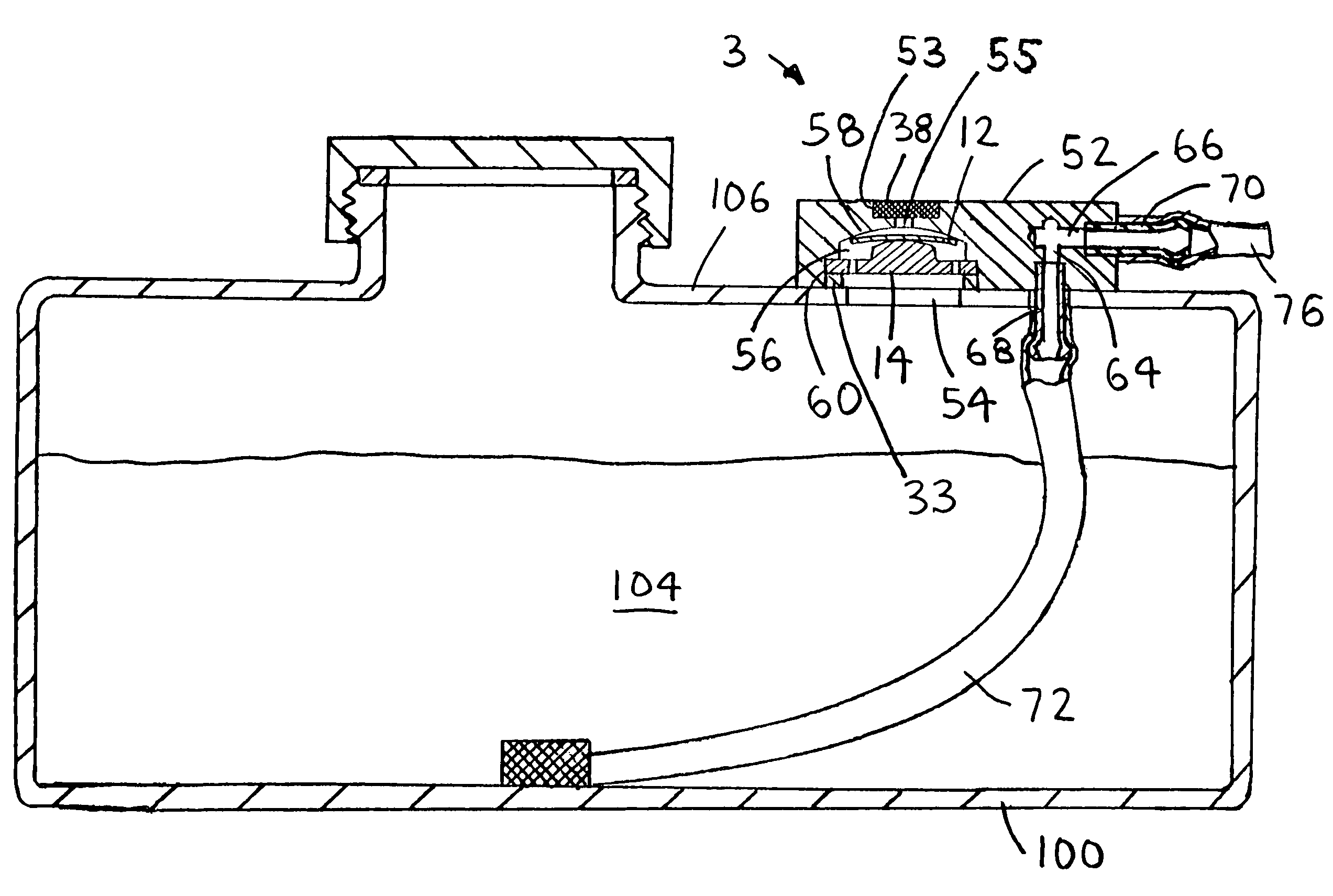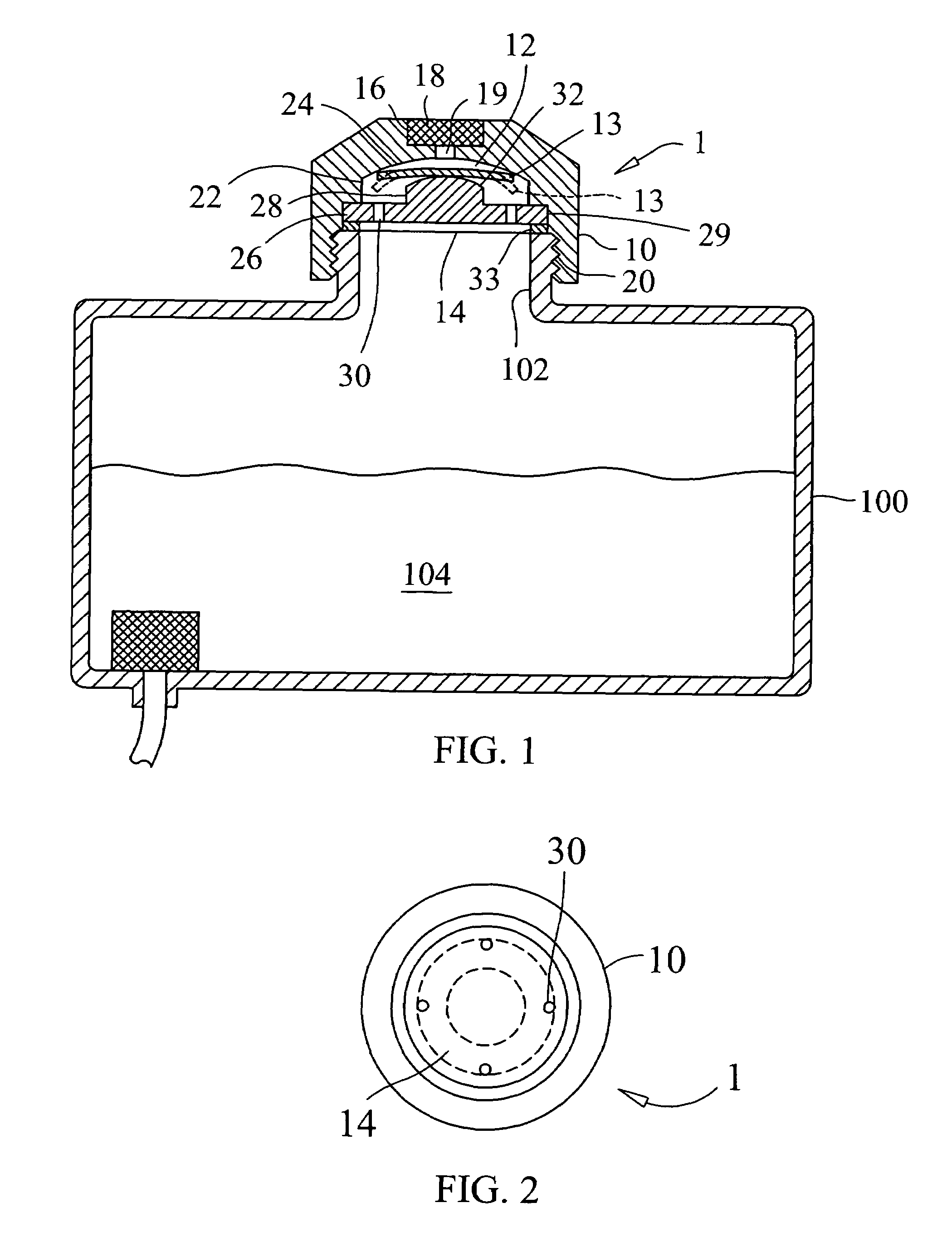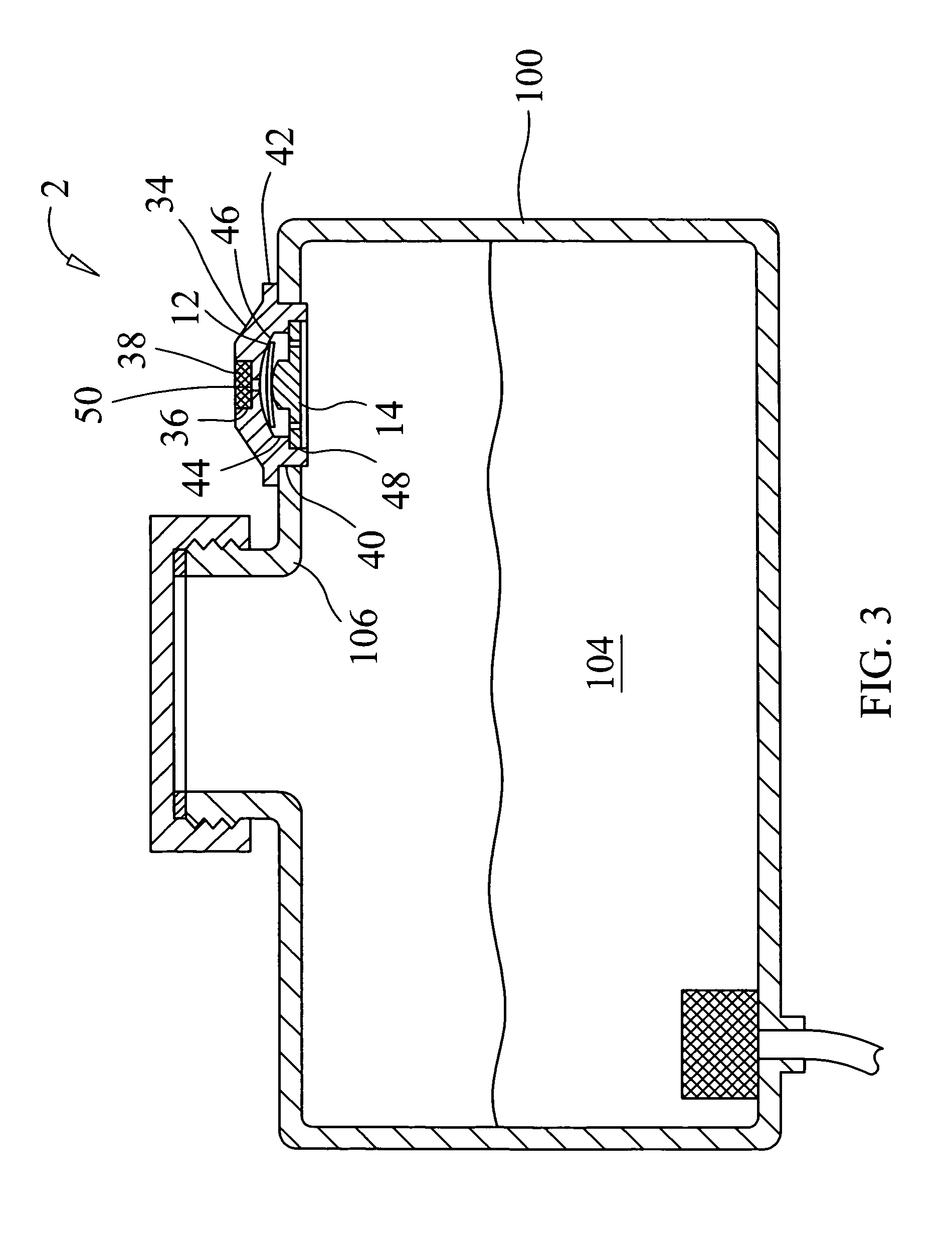Fuel tank venting system
a fuel tank and venting technology, applied in the direction of functional valve types, containers, transportation and packaging, etc., can solve the problems of not allowing fuel vapors into the atmospher
- Summary
- Abstract
- Description
- Claims
- Application Information
AI Technical Summary
Benefits of technology
Problems solved by technology
Method used
Image
Examples
second embodiment
[0023]the fuel tank venting system 2 includes a vent body 34, the vent diaphragm 12 and the vent disc 14. A filter cavity 36 is preferably formed in a top of the vent body 34 to receive the air filter 38. A body opening 40 is formed through a wall 106 of a fuel tank 100 that is sized to receive an outer perimeter of the vent body 34. A flange 42 preferably extends from a perimeter of the vent body 34. The vent body 34 may be attached to the fuel tank 100 by welding, threading or any other suitable process. A valve cavity 44 with a substantially concave bottom 46 is formed in a bottom of the vent body 34. A flow passage 50 is formed through the filter cavity 36 to the substantially concave bottom 46. A disc counter bore 48 is formed in a bottom of the vent body 34 to receive an outer perimeter of the vent disc 14.
[0024]The vent diaphragm 12 is first inserted into the valve cavity 44. The vent disc 14 is then inserted into the disc counter bore 48. The vent disc 14 is retained in the ...
third embodiment
[0026]the fuel tank venting system 3 includes a fuel vent body 52, the vent diaphragm 12 and the vent disc 14. A filter cavity 53 is preferably formed in a top of the fuel vent body 52 to receive the air filter 38. The fuel vent body 52 is attached to the fuel tank 100 with any suitable process. A clearance opening 54 is preferably formed in a wall 106 of the fuel tank 100 that is sized to allow air flow through the vent disc 14. A valve cavity 56 with a substantially concave bottom 58 is formed in a bottom of the fuel vent body 52. A flow passage 55 is formed through the filter cavity 53 to the substantially concave bottom 58. A disc counter bore 60 is formed in a bottom of the fuel vent body 52 to receive the disc flange 26 of the vent disc 14. The vent diaphragm 12 is first inserted into valve cavity 56. The vent disc 14 is then inserted into the disc counter bore 60. The vent diaphragm 12 is retained between the substantially concave bottom 58 of the valve cavity 56 and the subs...
PUM
 Login to View More
Login to View More Abstract
Description
Claims
Application Information
 Login to View More
Login to View More - R&D
- Intellectual Property
- Life Sciences
- Materials
- Tech Scout
- Unparalleled Data Quality
- Higher Quality Content
- 60% Fewer Hallucinations
Browse by: Latest US Patents, China's latest patents, Technical Efficacy Thesaurus, Application Domain, Technology Topic, Popular Technical Reports.
© 2025 PatSnap. All rights reserved.Legal|Privacy policy|Modern Slavery Act Transparency Statement|Sitemap|About US| Contact US: help@patsnap.com



